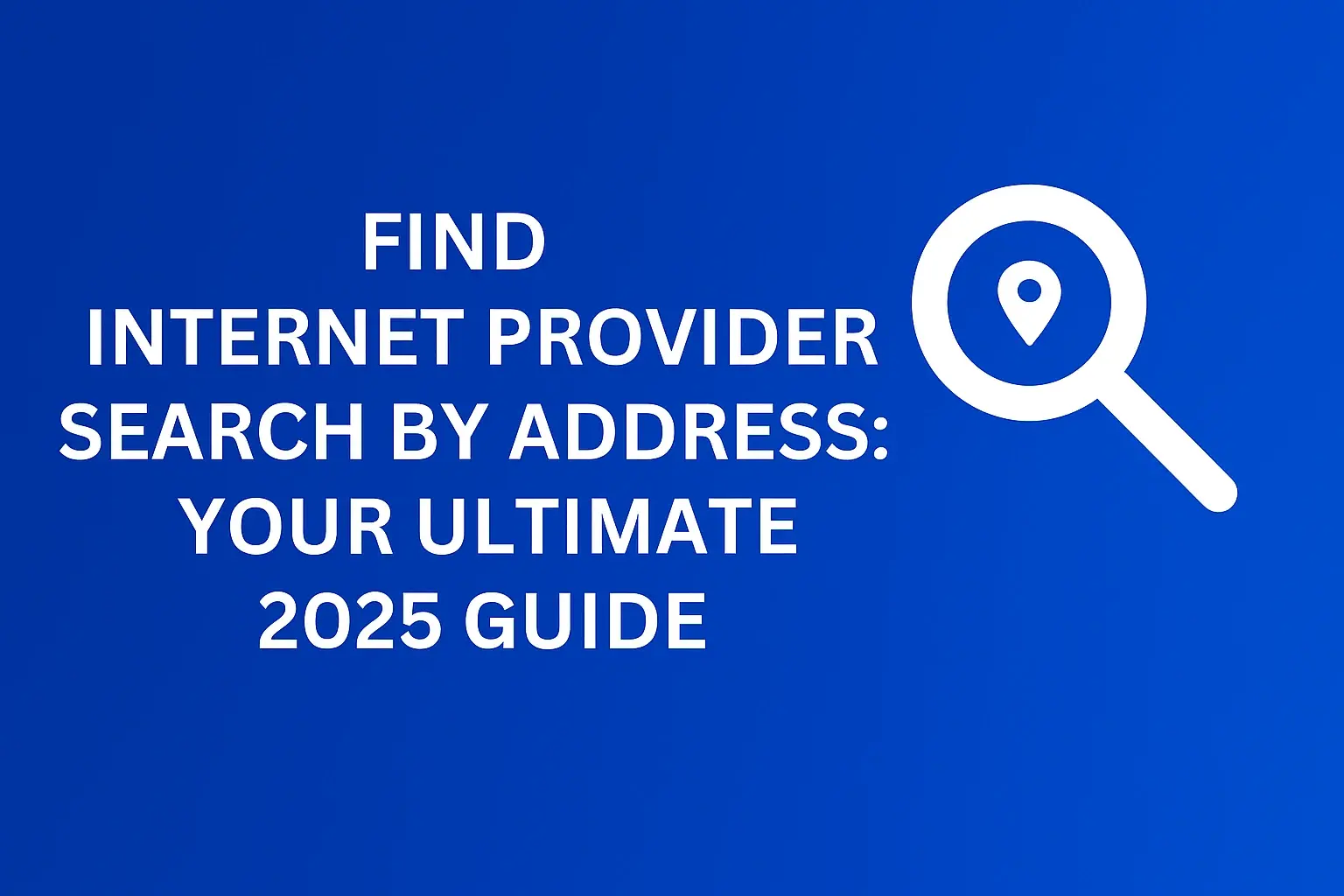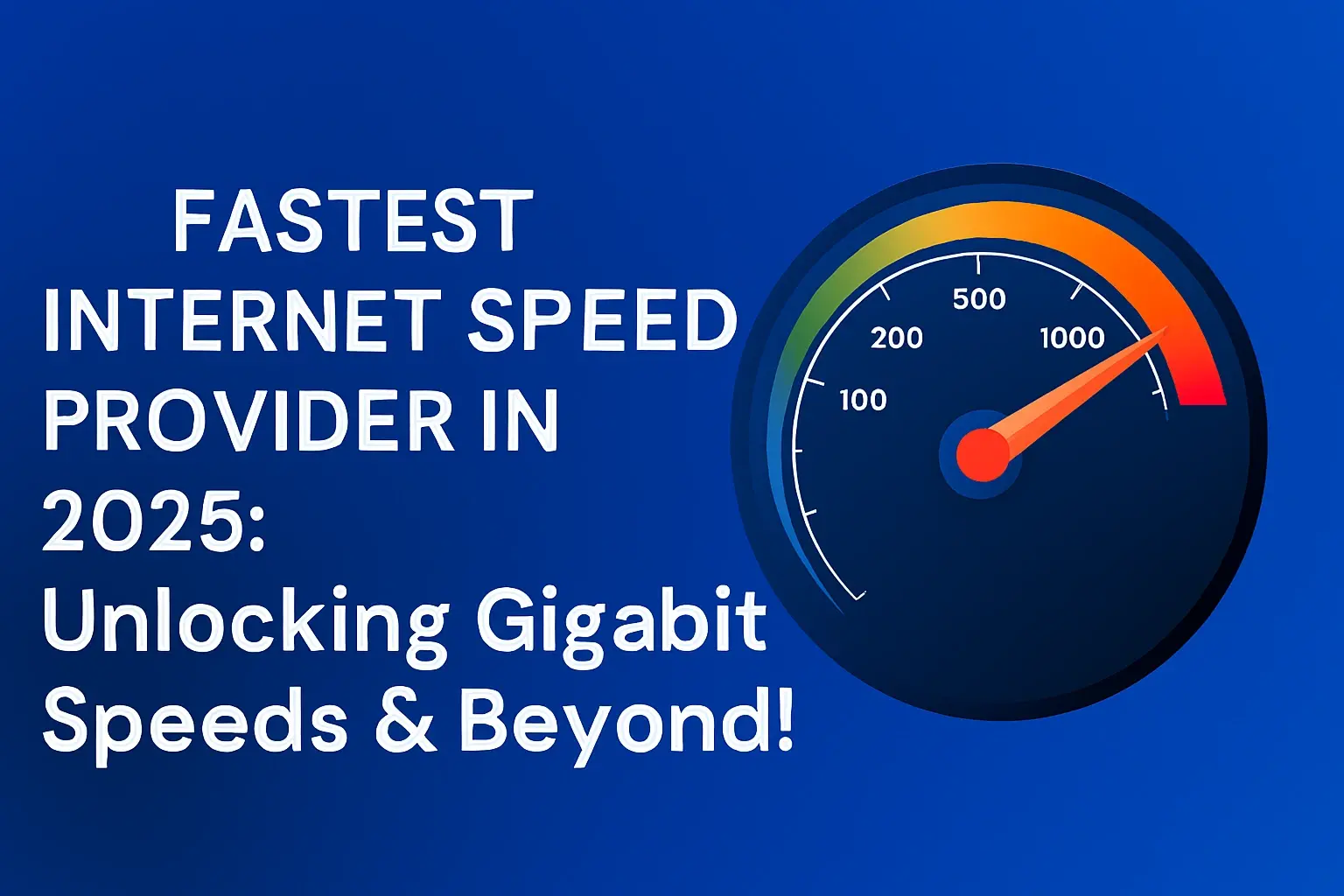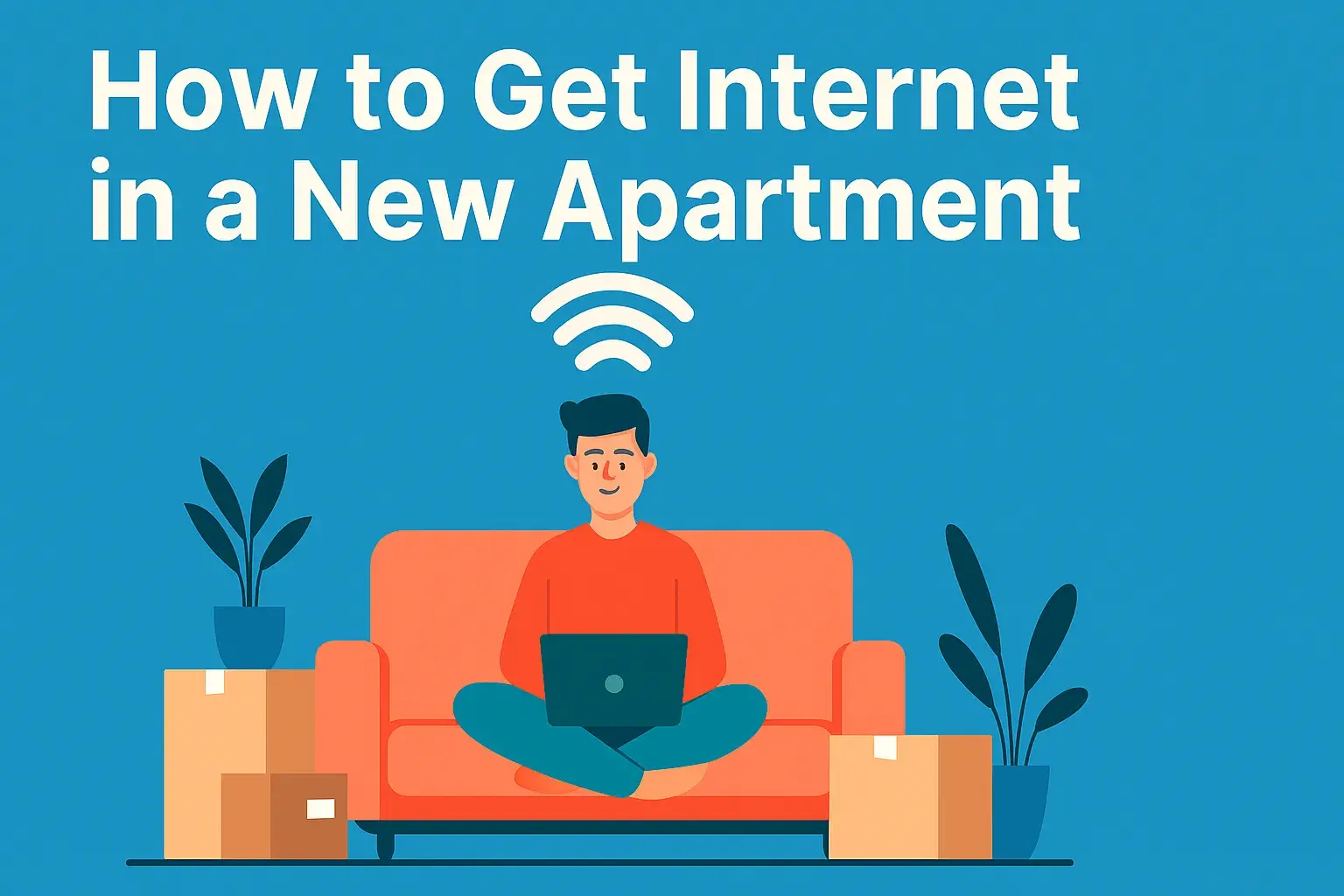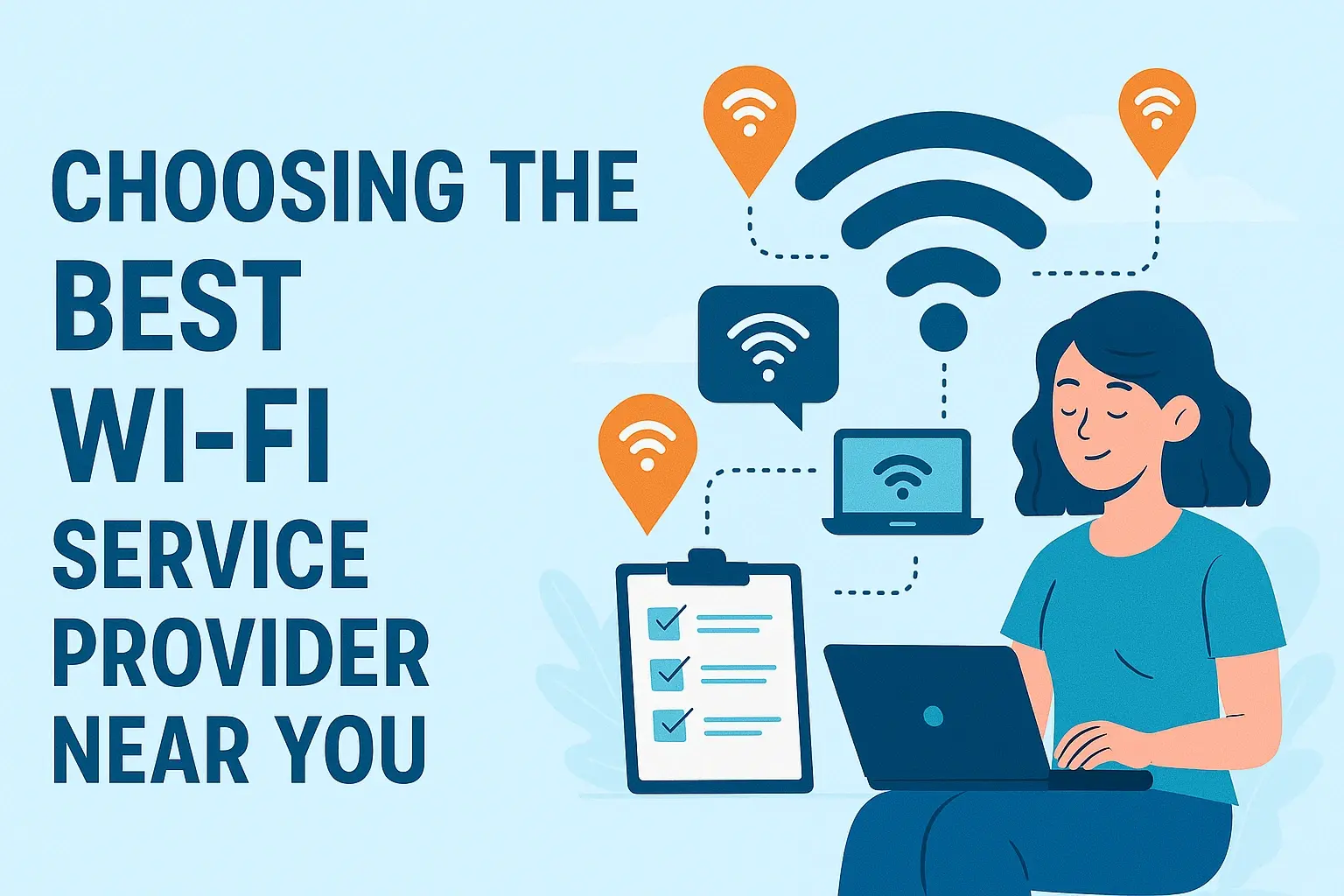Best Internet Plans in the USA: Top Providers and Location-Wise Options
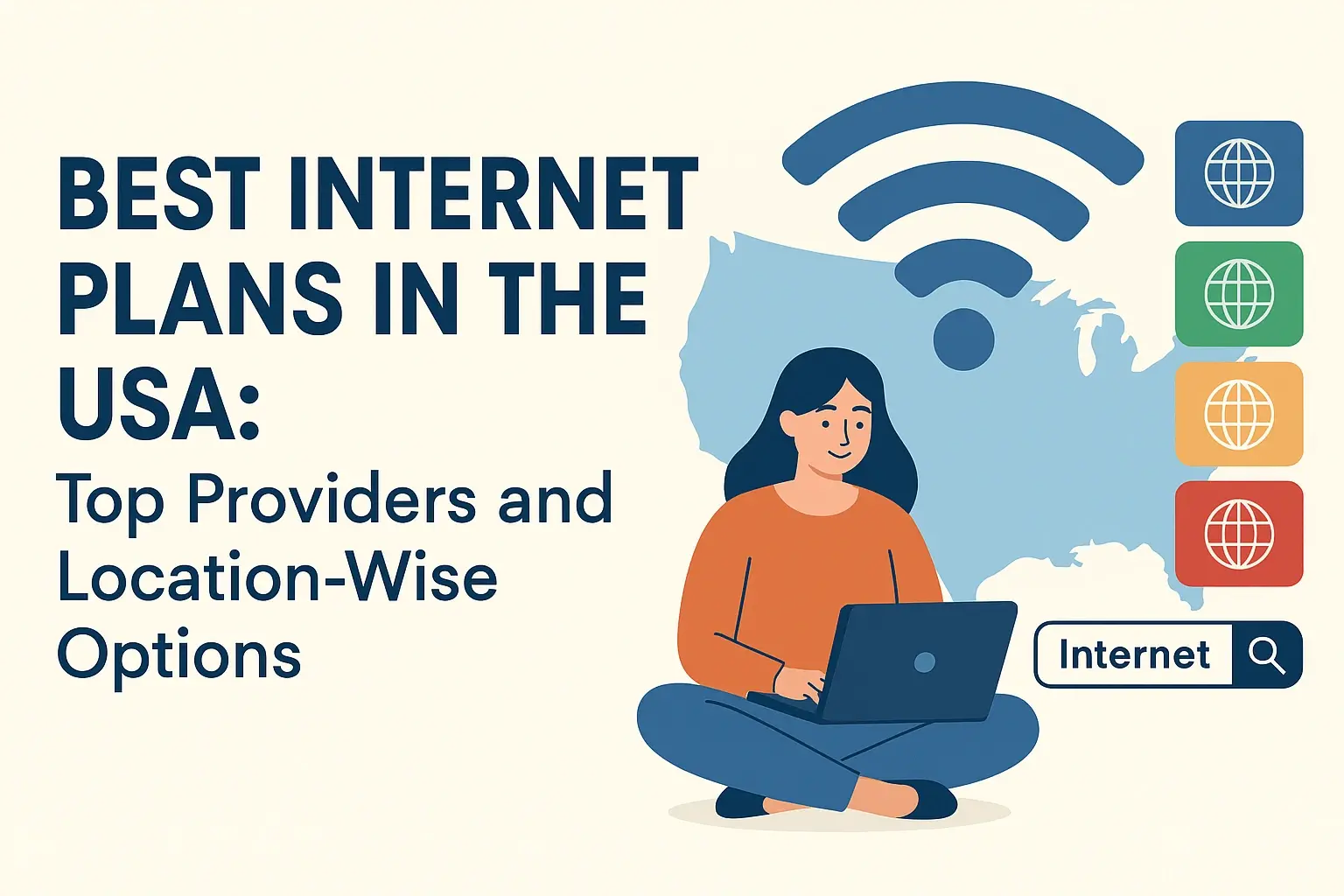
In today’s digital age, a reliable and fast internet connection is essential for work, entertainment, education, and staying connected. With numerous internet service providers (ISPs) offering a variety of plans across the United States, choosing the right one can be overwhelming. Factors like speed, cost, availability, and connection type (fiber, cable, 5G, or satellite) significantly determine the best plan for your needs. This comprehensive guide explores the top internet providers in the USA for 2025, their standout plans, and how availability varies by location, helping you make an informed decision.
Why Choosing the Right Internet Plan Matters
The internet has become a cornerstone of modern life. Whether streaming 4K movies, working remotely, gaming online, or managing smart home devices, the right internet plan ensures seamless performance. Key considerations when selecting a plan include:
Speed: Measured in Mbps (megabits per second) or Gbps (gigabits per second), speed determines how quickly data is transferred. Basic browsing requires 5–25 Mbps, while 4K streaming or gaming may need 100 Mbps or more.
Cost: Plans range from budget-friendly options under $50/month to premium multi-gigabit plans costing $100+.
Connection Type: Fiber offers the fastest and most reliable speeds, followed by cable, 5G, and satellite.
Availability: Not all providers or connection types are available everywhere, making location a critical factor.
Data Caps and Contracts: Some ISPs impose data limits or require long-term contracts, affecting flexibility.
To help you navigate these factors, we’ve compiled a list of the top ISPs in the USA, their best plans, and location-specific details based on recent data.
Top Internet Providers in the USA for 2025
Based on recent analyses from sources like CNET, USA Today, and HighSpeedInternet.com, the following ISPs stand out for their performance, reliability, and customer satisfaction in 2025. Below, we highlight their top plans and key features.
1. AT&T Fiber
Overview: AT&T Fiber is consistently rated as one of the best ISPs for its fast, reliable fiber-optic connections and competitive pricing. It’s ideal for households with high-bandwidth needs like streaming, gaming, or remote work.
Top Plans:
Internet 300: 300 Mbps download/upload for $55/month. Perfect for small households with multiple devices.
Internet 1000: 1,000 Mbps (1 Gbps) download/upload for $80/month. Great for heavy users and large households.
Internet 2000: 2,000 Mbps (2 Gbps) for $125/month, catering to ultra-high-speed needs.
Key Features:
Symmetrical upload and download speeds, ideal for video calls and cloud uploads.
No data caps or contracts required.
Free equipment (modem/router) is included with most plans.
Availability: AT&T Fiber is available in 24 states, including major cities like Dallas, Los Angeles, Atlanta, and Miami. Check availability by entering your ZIP code on AT&T’s website, as coverage varies within states.
Location-Specific Insights:
Texas (Dallas, Houston): Internet 1000 is a popular choice at $80/month, with widespread fiber availability.
California (Los Angeles, San Francisco): High demand for Internet 2000 due to tech-heavy households.
Florida (Miami, Orlando): Internet 300 is a budget-friendly option for smaller homes.
2. Verizon Fios
Overview: Verizon Fios is another top-tier fiber provider, praised for its reliability and customer satisfaction. It’s a favorite in the Northeast and Mid-Atlantic regions.
Top Plans:
Fios 300/300: 300 Mbps download/upload for $49.99/month.
Fios 940/880: 940 Mbps download/880 Mbps upload for $89.99/month.
Fios 2 Gig: Up to 2,300 Mbps for $119.99/month.
Key Features:
Symmetrical or near-symmetrical speeds.
No data caps or annual contracts.
Free router rental and Whole-Home Wi-Fi options.
Availability: Verizon Fios is available in nine states, primarily in the Northeast: New York, New Jersey, Pennsylvania, Maryland, Virginia, Delaware, Massachusetts, Rhode Island, and Washington, D.C.
Location-Specific Insights:
New York (NYC, Buffalo): Fios 940/880 is popular for $89.99/month, with strong coverage in urban areas.
Pennsylvania (Philadelphia, Pittsburgh): Fios 300/300 is a cost-effective choice at $49.99/month.
Virginia (Richmond, Norfolk): 2 Gig plan sees growing adoption for businesses and tech enthusiasts.
3. Xfinity
Overview: Xfinity by Comcast is the largest cable internet provider in the USA, offering wide availability and competitive pricing. It’s a great option where fiber isn’t available.
Top Plans:
Connect: 150 Mbps for $19.99–$30/month (varies by region).
Fast: 400 Mbps for $50/month.
Gigabit Extra: 1,200 Mbps for $80–$100/month.
Key Features:
Five-year price lock option for predictable costs.
Bundling options with TV and phone services.
Wide availability, covering 39 states.
Availability: Xfinity serves 39 states, including California, Texas, Florida, Illinois, and Pennsylvania. It’s a go-to choice in areas lacking fiber.
Location-Specific Insights:
California (San Francisco, San Diego): The Connect plan at $19.99/month is popular for budget-conscious users.
Texas (Houston, Austin): Gigabit Extra at $80/month suits large households.
Florida (Tampa, Jacksonville): Fast plan at $50/month is widely adopted for mid-tier needs.
4. Spectrum
Overview: Spectrum, a Charter Communications brand, offers cable internet with broad coverage and no contracts, making it flexible for renters and movers.
Top Plans:
Spectrum Internet: 300 Mbps for $49.99/month.
Internet Ultra: 500 Mbps for $69.99/month.
Internet Gig: 1,000 Mbps for $79.99/month.
Key Features:
No contracts or data caps.
Free modem; Wi-Fi router for $5/month (optional).
Consistent pricing across regions.
Availability: Spectrum is available in 41 states, including New York, Texas, California, and Ohio.
Location-Specific Insights:
New York (Albany, Rochester): Internet Gig at $79.99/month is popular for high-speed needs.
Texas (San Antonio, Dallas): The Internet plan at $49.99/month is a common choice for small households.
California (Los Angeles, San Diego): Internet Ultra at $69.99/month balances speed and cost.
5. T-Mobile 5G Home Internet
Overview: T-Mobile’s 5G Home Internet is a game-changer for areas with limited wired options, offering wireless connectivity with decent speeds and simple pricing.
Top Plan:
Home Internet: 72–245 Mbps (varies by location) for $50/month with AutoPay.
Key Features:
No contracts or equipment fees.
Simple setup with a 5G gateway device.
Unlimited data.
Availability: Available in 49 states, with coverage dependent on 5G network strength. Best in urban and suburban areas.
Location-Specific Insights:
Illinois (Chicago): Speeds average 100–200 Mbps for $50/month, ideal for cord-cutters.
Georgia (Atlanta): Reliable for streaming and light gaming at $50/month.
Rural Areas (e.g., parts of Montana, Iowa): Speeds may drop to 72 Mbps, but are still viable for basic needs.
6. Google Fiber
Overview: Google Fiber is renowned for its ultra-fast speeds and no-fee structure, though availability is limited to select cities.
Top Plans:
1 Gig: 1,000 Mbps for $70/month.
2 Gig: 2,000 Mbps for $100/month.
5 Gig: 5,000 Mbps for $125/month.
Key Features:
Symmetrical speeds with no data caps.
Free installation and equipment.
Transparent pricing with no hidden fees.
Availability: Available in 15 cities, including Kansas City (MO/KS), Austin (TX), Atlanta (GA), and Provo (UT).
Location-Specific Insights:
Missouri/Kansas (Kansas City): 2 2-Gig plan at $100/month is popular for tech-heavy users.
Texas (Austin): A 1 Gig plan at $70/month is a cost-effective high-speed option.
Georgia (Atlanta): 5 Gig plan at $125/month caters to businesses and enthusiasts.
7. Starlink
Overview: Starlink by SpaceX is a satellite internet provider, ideal for rural and remote areas where other ISPs are unavailable.
Top Plan:
Standard Plan: 50–150 Mbps for $120/month (plus $599 equipment fee).
Key Features:
Unlimited data with no contracts.
Best for remote locations.
Portable option for travelers.
Availability: Nationwide, with best performance in rural areas with clear sky views.
Location-Specific Insights:
Rural Montana, Idaho, Alaska: Standard Plan at $120/month is a lifeline for remote homes.
Suburban Areas (e.g., outskirts of Seattle): Viable but less competitive due to higher costs.
Location-Wise Plan Recommendations
Internet availability and plan suitability vary significantly by location due to infrastructure differences. Below are tailored recommendations for key regions:
Northeast (New York, Pennsylvania, New Jersey)
Best Provider: Verizon Fios for fiber reliability; Xfinity for cable availability.
Recommended Plan: Verizon Fios 300/300 ($49.99/month) for small households; Xfinity Gigabit Extra ($80/month) for larger ones.
Why: Dense urban areas have strong fiber and cable networks, offering high-speed options at competitive prices.
South (Texas, Florida, Georgia)
Best Provider: AT&T Fiber for speed; Spectrum for no-contract flexibility.
Recommended Plan: AT&T Internet 1000 ($80/month) for high-bandwidth needs; Spectrum Internet ($49.99/month) for budget users.
Why: Southern states have robust fiber expansion, with AT&T leading in Texas and Georgia. Spectrum’s wide coverage suits Florida.
West (California, Washington)
Best Provider: Xfinity for broad coverage; Google Fiber in select cities.
Recommended Plan: Xfinity Fast ($50/month) for general use; Google Fiber 2 Gig ($100/month) in Austin or Kansas City.
Why: California’s mix of urban and rural areas benefits from Xfinity’s reach, while Google Fiber shines in tech hubs.
Midwest (Illinois, Ohio)
Best Provider: T-Mobile 5G Home Internet for simplicity; Spectrum for cable reliability.
Recommended Plan: T-Mobile Home Internet ($50/month) for urban areas; Spectrum Internet Gig ($79.99/month) for high speeds.
Why: 5G is expanding in cities like Chicago, while Spectrum covers suburban and rural Midwest areas.
Rural Areas (Montana, Idaho, Alaska)
Best Provider: Starlink for connectivity; T-Mobile 5G where available.
Recommended Plan: Starlink Standard ($120/month) for remote homes; T-Mobile Home Internet ($50/month) in semi-rural areas.
Why: Satellite is often the only option in remote regions, with Starlink leading in speed and reliability.
How to Choose the Best Plan for Your Location
Check Availability: Use tools like CtvforMe or CablePapa to enter your ZIP code and see available ISPs and plans.
Assess Your Needs:
Light Use (email, browsing): 50–100 Mbps (e.g., Xfinity Connect, T-Mobile Home Internet).
Moderate Use (streaming, video calls): 300–500 Mbps (e.g., Verizon Fios 300/300, Spectrum Internet Ultra).
Heavy Use (gaming, 4K streaming, large households): 1,000+ Mbps (e.g., AT&T Internet 1000, Google Fiber 2 Gig).
Compare Costs: Look for promotions, but beware of price increases after introductory periods.
Consider Connection Type: Prioritize fiber (AT&T, Verizon, Google) for speed, cable (Xfinity, Spectrum) for availability, or 5G/satellite (T-Mobile, Starlink) for flexibility.
Read Reviews: Check customer satisfaction ratings on sites like ConsumerReports.org or ACSI.org to gauge reliability.
Tips for Getting the Best Deal
Negotiate: Contact ISPs to ask for discounts or match competitor offers.
Avoid Contracts: Opt for no-contract plans (Spectrum, T-Mobile) for flexibility.
Bundle Wisely: Bundling with TV or phone services (e.g., Xfinity) can save money, but may lock you into longer terms.
Monitor Promotions: ISPs like Xfinity and AT&T often offer introductory rates for new customers.
Conclusion
Choosing the best internet plan in the USA for 2025 depends on your location, budget, and usage needs. AT&T Fiber and Verizon Fios lead for fiber-optic reliability, Xfinity and Spectrum dominate cable availability, T-Mobile offers innovative 5G solutions, Google Fiber excels in select cities, and Starlink serves remote areas. By checking availability, comparing speeds and costs, and prioritizing connection types, you can find the perfect plan for your home. For the latest deals and coverage, visit provider websites or comparison tools like CtvforMe.
Call (855) 210-8883 to get an internet provider now!
Faq
1. What are the best internet providers in the USA right now?
Some of the top-rated internet providers in the USA include Xfinity, AT&T Fiber, Spectrum, Verizon Fios, and T-Mobile Home Internet. These companies offer a wide range of internet plans with varying speeds, prices, and availability based on your location.
2. Which internet plans offer the fastest speeds in the USA?
AT&T Fiber and Google Fiber currently offer some of the fastest residential internet plans in the USA, with speeds up to 5 Gbps. These are ideal for heavy internet users, streamers, and remote workers who need ultra-fast and stable connections.
3. How do I find the best internet plan in my area?
To find the best internet plan in your area, use ZIP code search tools on platforms like Allconnect, InMyArea, BroadbandNow, or CtvForMe. These tools help you compare local providers, check coverage, and find the fastest and most affordable plans near you.
4. Are there affordable internet plans for low-income households?
Yes, many providers offer budget-friendly plans under programs like the Affordable Connectivity Program (ACP). Providers such as Xfinity, Spectrum, and Cox offer discounted internet plans starting as low as $9.95/month for eligible households.
5. Which internet provider has the best coverage across the USA?
Xfinity has the widest national coverage, available in over 40 states. However, Spectrum and AT&T also have extensive networks. The best provider for your location will depend on availability, speed, and local infrastructure.

